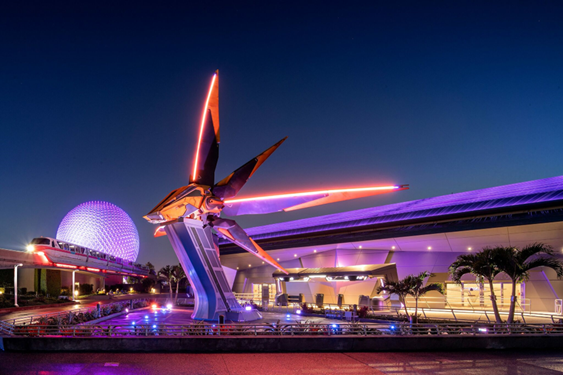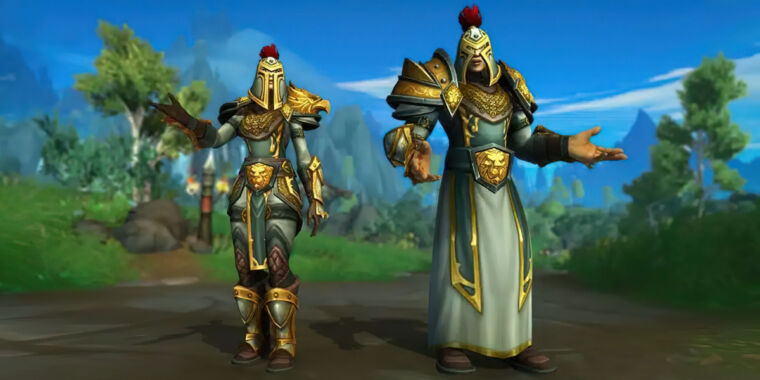When you hear the phrase “theme park,” it’s hard not to simultaneously picture a mouse named Mickey. However, while the colorful attractions and whimsical characters of theme parks feel effortless, in reality, their success is based on the ongoing technological advancements that keep the attractions safe and fun.
Prior to the 1971 opening of the Magic Kingdom, in Orlando, Florida, creator Walt Disney had witnessed the growing popularity of the Matterhorn rollercoaster at Disneyland California. Inspired to create an equally thrilling ride for Magic Kingdom, Disney tasked his “Imagineers,” the park’s creative team, with its creation. The Imagineers pushed the boundaries of engineering and technology to bring his dream to life. The new ride would use cutting-edge technological advancements and Disney magic to give riders the feeling of journeying through space. In December of 1972, construction began on Space Mountain.
When Space Mountain opened in 1975, it was quickly apparent that the estimated $20 million it took to construct it were dollars well spent. At the time of its creation, Space Mountain was unique for both its attraction design and rollercoaster construction.
Concept art for Space Mountain.
Attraction Design
Space Mountain was the first ride to merge two common theme park attraction designs: the rollercoaster and the dark ride. A dark ride is an indoor ride in which guests board and ride guided vehicles along a controlled path while passing scenes containing animatronics, music, special effects, and lighting.

Space Mountain exterior.
Space Mountain’s design took the thrills of a traditional rollercoaster and merged them with the theming and scenery of a dark ride. The Space Mountain experience starts before you even enter the building; the queue building entrance is designed to look like a Starport. Visitors enter the Starport and, as they queue, make their way through rooms and tunnels to the docking station. These areas include interactive screens, maps, lights, and sounds, all to make you feel like you’re preparing for a trip into space. At the front of the queue, visitors finally board their spaceships and begin the ride.

Space Mountain ride system and trains.
The ride itself is a 2 ½ minute experience with a max height of 90 feet and a max speed of 27 mph. Though the track has only mild drops and top speeds, by placing the rollercoaster indoors and in the dark, designers were able to hide the twists, turns, and drops on the track to create a more thrilling experience.
Computer-Controlled Braking System
Space Mountain was not only the first indoor steel rollercoaster, but also the first ride of its kind to implement a computer-controlled braking system. This system allows ride technicians to track multiple vehicles on the ride simultaneously, which in turn maximizes ride turnover and overall safety.

Space Mountain track layout.
Space Mountain’s computer-controlled braking system paved the way for future computer implementation on all aspects of theme park rides, and can be seen on every rollercoaster today.
The Success of Space Mountain
Space Mountain went on to become a staple attraction at Magic Kingdom and one of the most popular rides in the world. Disney recreated the ride at four other parks, and other theme park companies have since created similar rides based on the winning formula.
In 2017, as part of the redesign of Disney World Resort’s Theme Park: Epcot, Disney announced the construction of a new rollercoaster themed after Guardians of the Galaxy. In May of 2022, Guardians of the Galaxy: Cosmic Rewind opened to the public. It cost an estimated $500 million to complete, making it the most expensive theme park ride ever built.

Cosmic Rewind concept art.

Cosmic Rewind exterior.
Cosmic Rewind Advancements
Fifty years of rollercoaster advancements are all present within the ride system of Cosmic Rewind:

Cosmic Rewind indoor track layout.
- Computer-controlled braking system: This rollercoaster uses the newest version of the computer-controlled braking system first implemented in Space Mountain.
- LSM launch system: Instead of moving the trains with the traditional rollercoaster lift chain system, Cosmic Rewind uses the LSM launch system. The LSM launch system uses magnets to speed up and slow down the vehicles. Cosmic Rewind is also the first rollercoaster to ever introduce a backward launch.
- Omnicoaster trains: The ride uses new omnicoaster trains, named as a homage to the vehicles used in traditional dark rides that were able to point guests to specific scenes. Cosmic Rewind’s vehicles enhance the coaster’s thrill by spinning guests a controlled 360 degrees.
- Special effects: Along with traditional lightning effects, high-definition screens and projection mapping of characters and locations add realism to the layouts.

Cosmic Rewind omnicoaster trains.
Cosmic Rewind is the ultimate grandchild of Space Mountain. Every single aspect of Space Mountain is beautifully present within the blueprint of Cosmic Rewind.
Theme Parks continue to explore and push the envelope when it comes to design, technology, and engineering. By examining any single aspect of a ride or show, you can see how the industry has evolved throughout the years.
Comparing two rides 50 years apart, such as Space Mountain and Cosmic Rewind, is an inspiring way to see not only the advancements in attractions but also the passion for preserving the underlying goal of entertainment. I look forward to seeing what the next 50 years have in store and how Cosmic Rewind will compare to the next great theme park attraction.
Source link











Leave a Reply